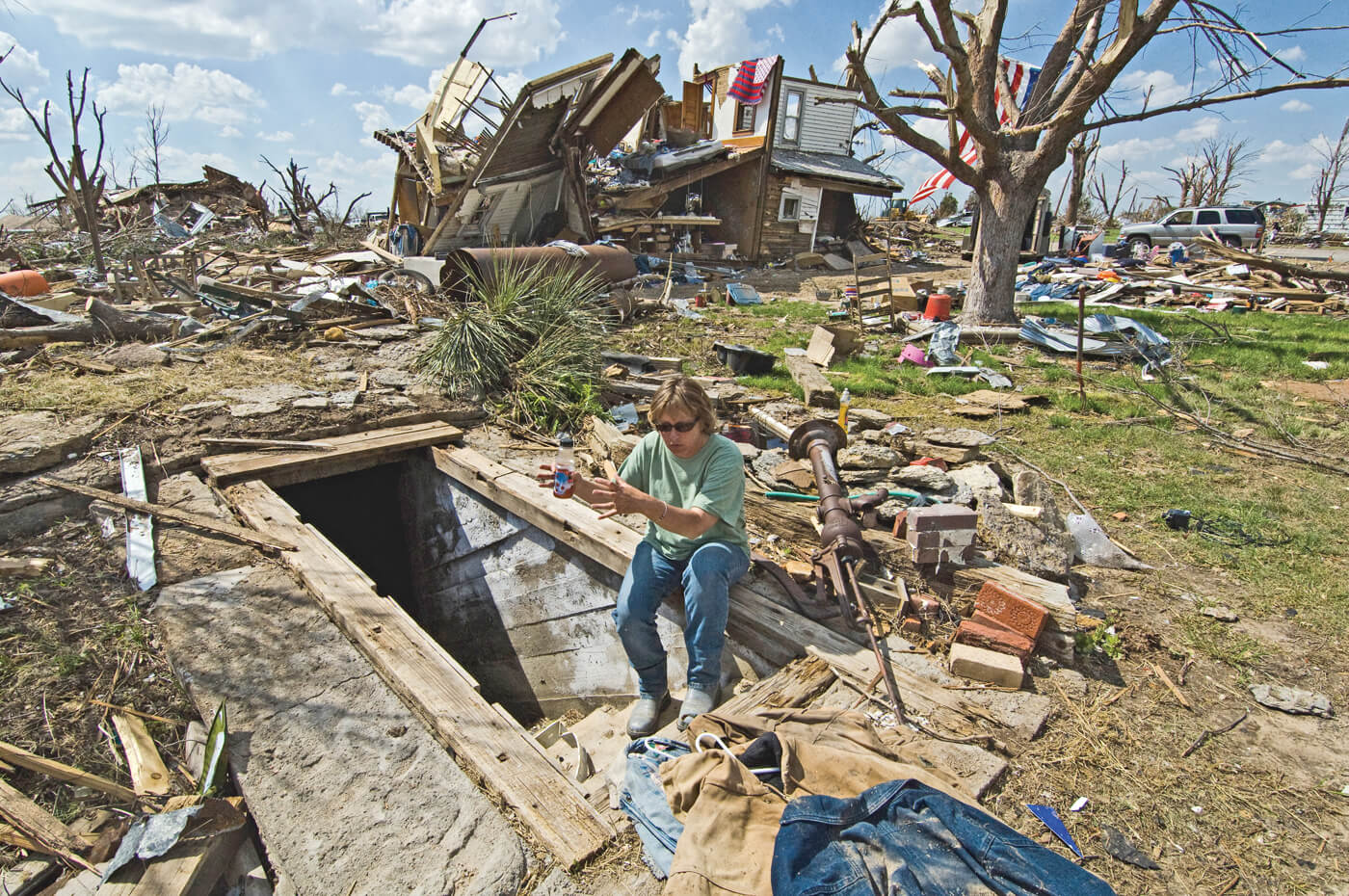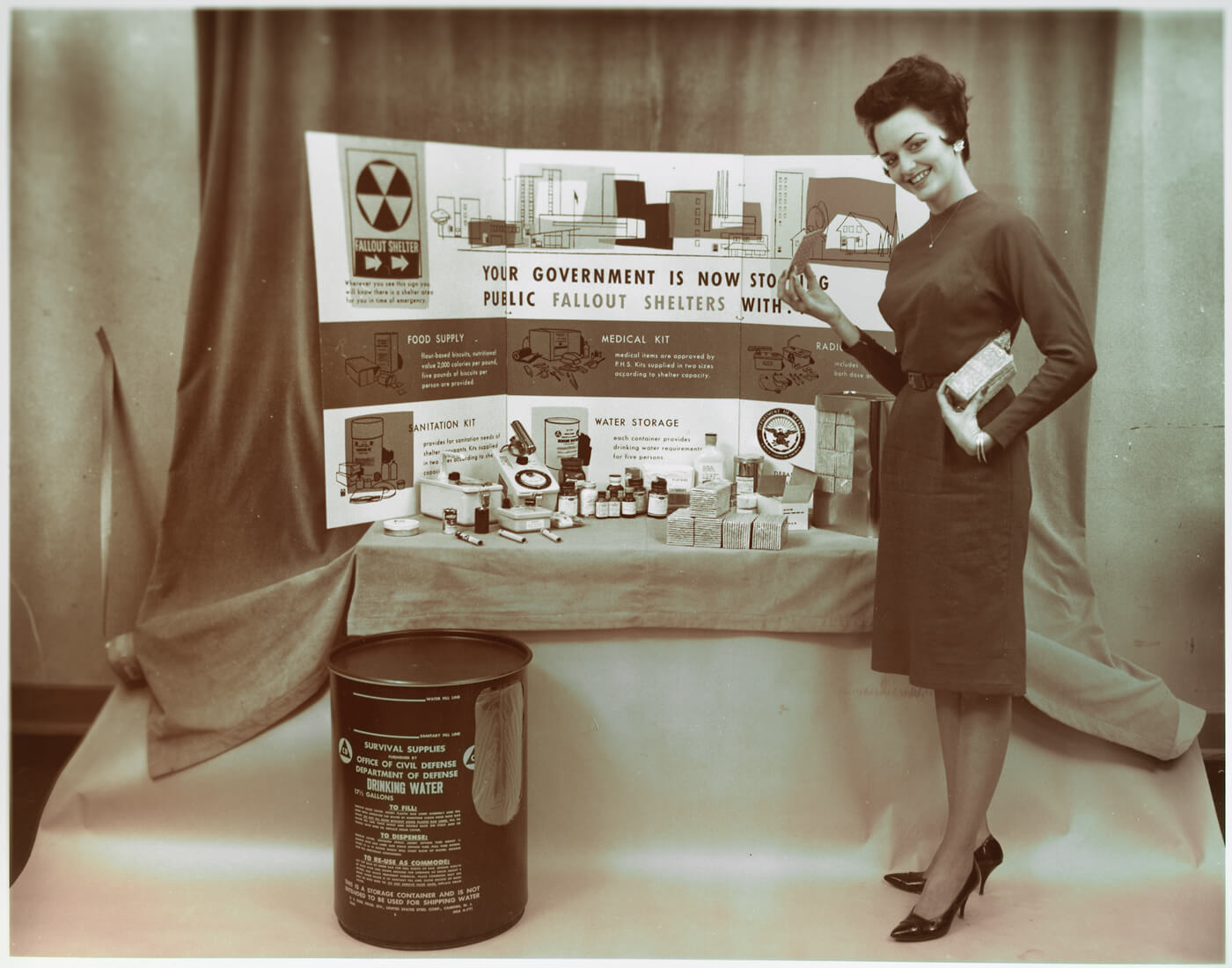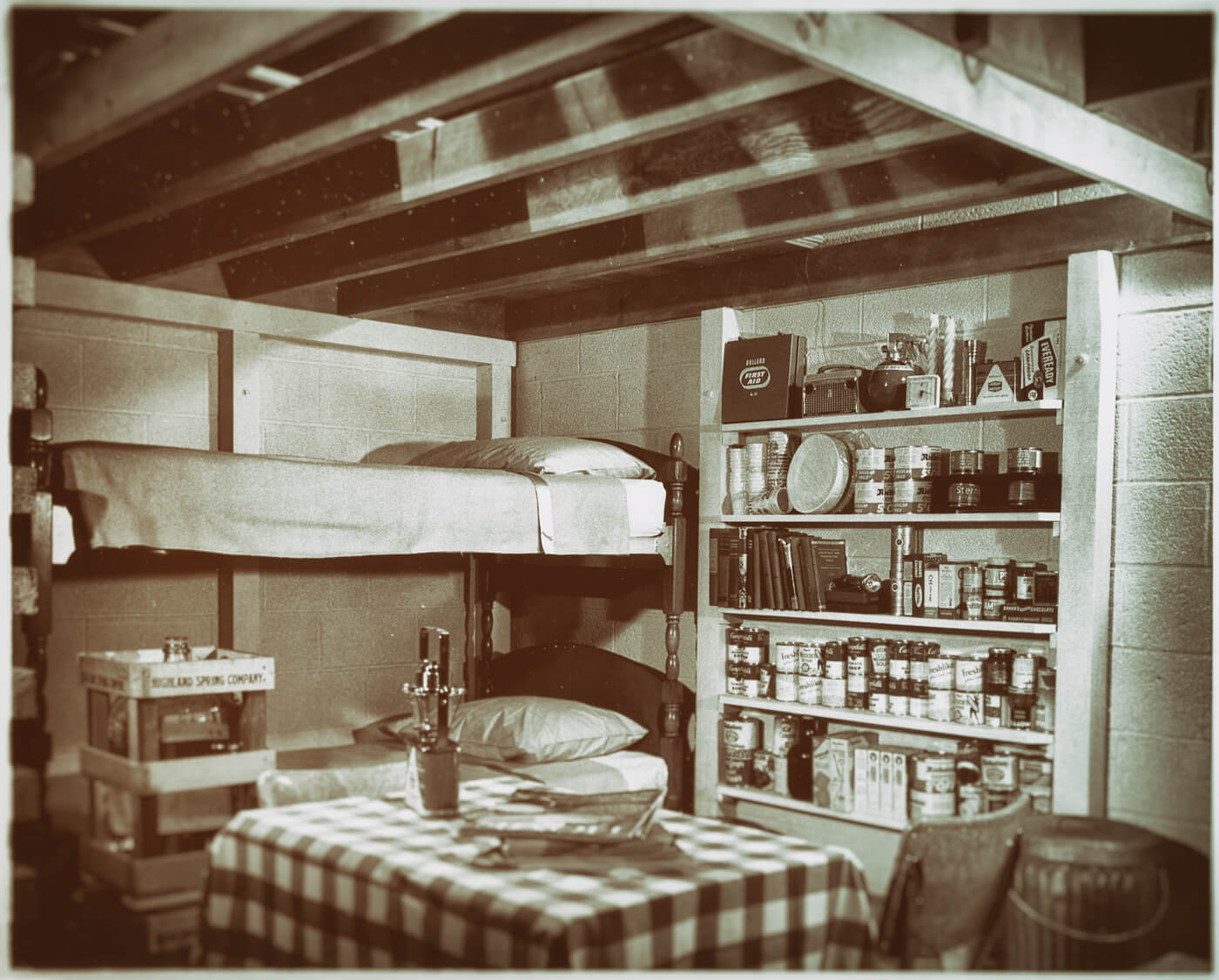Your ancestors lived in caves and now you might be thinking it wasn’t such a bad idea after all. Of course, your cave now comes with flushing toilets, showers, queen-sized beds, a flat-screen TV and a year’s worth of rations. Welcome to today’s underground shelters.
There are plenty of companies willing to sell you prefabricated underground shelters or bomb shelters (these two are not the same) and install them on your property. This is the relatively cheap option, but if you have the scratch to spare, they will custom-design and build a shelter to suit your needs.
If you’re so inclined, they can even construct a multi-family underground dwelling. This isn’t some repurposed, moldy and leaky Cold War-era missile silo (although those do pop up for sale occasionally … missile not included), but a state-of-theart shelter for you and your family.
The big question literally comes in many shapes: What is the best shape for a shelter? There are round steel shelters, round corrugated steel shelters, concrete shelters, square shelters and other options to choose from. Each fills a unique niche; some are better as bomb shelters, while others are intended as storm or fallout shelters.
ATLAS SURVIVAL SHELTERS
Atlas Survival Shelters specializes in corrugated tube shelters the company claims are “the only bunkers tested against the effects of a nuclear bomb.” The interiors of the shelters are comfortable, with the look of an attractive RV with a ton of storage space. Once you get to around 10 feet underground, the temperature stays constant at approximately 55 degrees (F)— a bit nippy, but you won’t freeze (and you won’t cook, either). Pack some sweaters in that storage space!
Atlas Survival Shelters are airtight and have CO2 air scrubbers, as well as an NBC (nuclear, biological and chemical) rated filtration ventilation system with a hand crank for operation, as needed. You also get a separate decontamination room with a shower to use before entering the shelter. A separate generator pod is also available as an option. In addition to the main entrance door, Atlas includes an escape hatch for emergency egress that opens inward just below the ground surface.
ULTIMATE BUNKER
Ultimate Bunker specializes in square underground shelters of various sizes and guarantees sufficient storage capacity for one year’s worth of food and water per inhabitant (the company’s smallest bunker fits two people). Ultimate Bunker also offers safe rooms and gun vaults, as well as installation services.
HARDENED STRUCTURES
Hardened Structures specializes in square steel shelters to protect you from tornado, hurricane and fallout threats and will build them to suit your needs. This manufacturer even offers a missile silo reconditioning service that includes a private, aboveground runway/helo pad, fiber-optic communications and fully NBC-rated ventilation systems … along with five-star accommodations.
BOMBNADO DISASTER SHELTERS
BombNado Disaster Shelters, made by Atlas Survival Shelters, offers a variety of floor plans that run in size from 8×8 to 8×20 feet. The underground shelters come with an NBC-rated air filtration system, underfloor storage area and an 8-ton hydraulic hatch lift jack to ensure you can exit if debris covers the entrance. There is also a list of options to allow you to customize the space to meet your specific needs. You will need to arrange installation with a contractor of your choosing.
Keep in mind that purchasing and installing an underground bunker can cost as much as the home above it … and the structure is just the beginning of your costs.

COMMS SYSTEMS FROM THE UNDERGROUND
In the coming apocalypse, if you’re locked down, you will probably be disconnected from other people—unless you have a hardwired comms connection to a clandestine antenna or other shelters. If you can safely get back on the surface, you might be forced to use a lowtech means of medium- to long-range communication (such as smoke signals or drums). For direct-line-of-sight, simple, coded communications, a small laser would be very handy, even in daylight conditions in many areas.
Of course, my preferred method is to use rechargeable batteries and long-range walkie-talkies. The direct-line-of-sight range for these can be 35 miles, although it can be less in the woods, mountains or around buildings. Ham radios will provide greater reach, but they require additional infrastructure you might not have access to. If you are hunkering down, you might also want to install either wired or wireless cameras for external observation and as an early-warning and threat-assessment system.
If the cell system is still operational, your mobile phone will be invaluable—that is, if you can keep it charged. The Scorpion II Radio from Major Surplus is one of many options that keep you in touch with AM/ FM broadcasts and an emergency weather band. It also has a solar panel and hand crank charger and can recharge itself and your cell phone.
However, sometimes going “old school” works best, and you can find old military surplus field telephones (and the phone cables to connect them) with a bit of effort. For instance, The Sportsman’s Guide offers U.S. Vietnam- and World War II-era field phones and cable, as well as Swedish surplus military hand-crank field telephones with codes (in case you need to call Sweden).
Staying in touch with both loved ones and emergency services is of paramount importance when things go very wrong, so reliable communications, as well as the means to keep them operational, should not be ignored.
HUNKERING DOWN WITHIN YOUR BUDGET
It is impossible to prepare for every eventuality, and not everyone can afford to spend tens of thousands on a nuke-proof underground lair. We each do the best we can with what we have; for many, that simply involves stockpiling emergency supplies, food and water in a basement or separate room. Basements work great, because they can also be fortified into a storm shelter or safe room without much effort or cost.
WATER AND FOOD

If you store your water in plastic containers, you will need to replace the water once a year and add a few drops of bleach (four drops per gallon) to the new water. Yes, water can “go bad” and develop bacteria and leach chemicals from the plastic container, so only use containers intended for long-term storage. For food, my preference is MREs, which contain more than 1,200 calories per pack. I figure on a minimum of one MRE per person per day, especially if you are just sitting around and not burning calories. However, canned food works just as well, and it can be safe to eat for more than 100 years.
WASTE MANAGEMENT
Of course, everyone thinks of food and water first, in case you have to hunker down for an extended period, but everything you consume is going to come back sooner or later. In my case, I can just wander into the woods. But what if it is not safe to go out of underground shelters because of weather, fallout or marauders?
In the worst-case scenario, you could use a suitable plastic bag and then seal it. But there are better options.

Major Surplus offers a simple Portable Folding Toilet (a toilet seat on a folding chair with a plastic bag underneath) and spare toilet bags. The company’s Deluxe S.I.P. Kit includes a bunch of survival items, as well as a 5-gallon bucket with toilet seat, lid, bags and toilet paper. For more-genteel types, The Sportsman’s Guide offers the Reliance Flushable Loo 400 Toilet. This is a self-contained unit, but you should get at least a few flushes before you have to empty it.
BREATHING EASY
Most underground shelters, especially basement or in-home shelters, are not airtight, so ventilation is not an issue. However, under certain circumstances (such as fallout or chemical/biological agents), the government warns that you need to have plastic sheeting and duct tape on hand to seal all windows, doors and vents. This will limit the entrance of contaminants but still allow you to breathe.
However, plastic sheeting is not going to keep out viruses. For the ultimate in clean, breathable air, you need a military-grade air filtration system designed for an actual survival shelter. These can be purchased and are typically of European or Israeli manufacture. They include full NBC (nuclear, biological and chemical) filters, as well as a hand crank to operate the apparatus if the power goes out.
The cheapest short-term option is to buy a gas mask with a decent supply of proper filters. These are widely available (such as the popular Israeli civilian gas mask) but not comfortable for long-term use and will require you to shave your beard.
Absorbing all this information seems overwhelming, but each individual step is logical and well within your capabilities. Draw from your experience in making similar decisions, and build your sheltering plan based on your location and budget, as well as what you perceive might be the greatest threat to your way of life.

Atlas Survival Shelters (855) 4BUNKERS
BombNado Disaster Shelters (844) 639-7435
Hardened Structures (877) 486-0084
Major Surplus & Survival (800) 441-8855
The Sportsman’s Guide (800) 882-2962
Ultimate Bunker (801) 661-3900
Editor’s note: A version of this article first appeared in the Jan 2017 print issue of American Survival Guide.





